By Ross Stanley
Over the centuries various influences impacted on attaching titles to turf contests.
The overseas background
Entrenched traditions, recognition of participants, sponsorships and novel creations are but a few of the factors that have had an effect.
Understandably, racing during this land’s colonial days was shaped by an English inheritance.
The Restoration of the Stuart monarchy in 1660 had ushered in a progressive period for the sport.
According to The Crown Chronicles, King Charles II brought back horse racing when he commissioned the Newmarket Town Plate. The monarch, who regularly watched track work astride Old Rowley at Warren Hill, wrote the rules for the race himself.
One of the many stipulations was that the winner had to give 20 shillings to be distributed to the poor and 20 shillings to the clerk of the course for maintenance. Furthermore, no serving men or groom men were allowed to compete.
The contests were referred to as the Twelve-Stone Plates and were the predecessors of the King’s and Queen’s Plates. They were a major advancement on matches and sweepstake competitions because their advertised prize was funded by sources other than the owners. The move was a stimulus to breeding.
Mercifully, the equivalent of 76kg mentioned above refers to the required weight of the rider and not that of any trophy! The king himself was apparently victorious in the saddle for his Plates in 1671 and 1675.
Down the ages, some Plates were a platter of prescribed value and some were money only. Some were a different trophy. Despite its name, the present for the first Melbourne Cup in 1861 was a gold watch.
Queen Anne, who was Charles II’s race-going niece, reigned from 1702 to 1714. She owned a string of horses and energetically patronised the game, establishing Ascot Racecourse and sponsoring its first race. It was Her Majesty’s Plate, decided by three heats of four miles apiece.
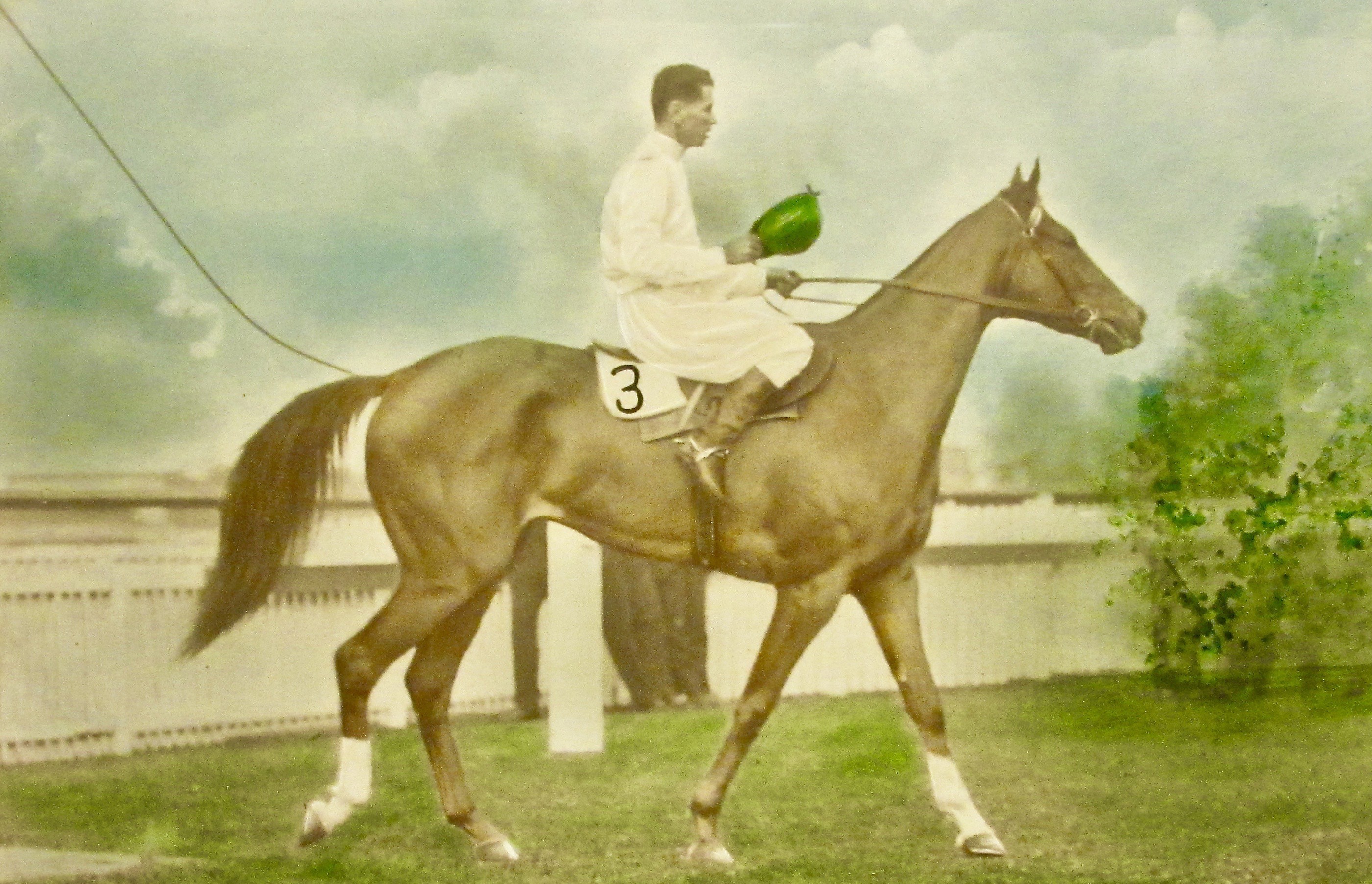
The embryonic era
Not surprisingly, Plates figured prominently in early Australian programs with Town Plates a common feature. There was a Queen’s Plate on offer at Sydney’s Homebush track in 1851.
Governor Macquarie, his Lieutenant Maurice O’Connell and the 73rd Regiment were behind the first government-approved race meeting on Sydney’s Common that was to be known as Hyde Park in deference to London’s famous reserve.
Some of the components of this 1810 fare were an interesting mix.
The Racecourse Subscribers, which were akin to modern day club members, gave a 50 guinea plate and the Ladies of the Colony contributed a 50 guinea cup, both for subscribers' horses only. The Magistrates of the Colony put up a 50 guinea purse, which was open to all horses.
Queensland’s rudimentary phase kicked off soon after free settlers were allowed into Moreton Bay’s former penal establishment. Topping the bill at Cooper’s Plains on July 17, 1843 was the £30 Brisbane Town Plate over two miles.
Ipswich conducted an instalment of the Australian Champion Sweepstakes in 1861. The series became the VRC Champion Stakes from 1876, VRC King’s Plate in 1916 and the VRC Queen’s Plate in 1952. In the modern era, King’s and Queen’s Cups have been rotated from state to state annually since 1927.
Maurice O’Connell (Junior), whose father was prominent in the Hyde Park presentation a half century earlier, presided over the Queensland Turf Club when Eagle Farm began operating in 1865.
Items during the three-day August meeting included a £100 Maiden Plate, £100 City Plate, Drapers’ Purse, Publican’s Purse, Brisbane St Leger, Oakwood Cup, Champagne Handicap, Prince of Wales Stakes, Tattersall’s Club Cup, Claret Cup, a Hurry Scurry for hacks at catch weights, a Consolation for the losers and a Forced Handicap, the finale that was ostensibly for the winners.
The Selling Stakes whereby the winner was to be sold by auction immediately after the race for £100 had a twist. If entered to sell for just £75, the horse was allowed seven pounds. It was 14 pounds off for £50 and 21 pounds for £25. Any surplus made by the auction went to the race fund.
Although this type of claiming race is the backbone of lower class competition in America, the format eventually faded out in Australia.
The Corinthian Handicap was limited to horses that were the bona fide property of members of the Club for three months prior to the time of starting. They were to be ridden by club members.
From 1969 to 1975, Eagle Farm was the venue for a Corinthian Handicap for amateur jockeys.
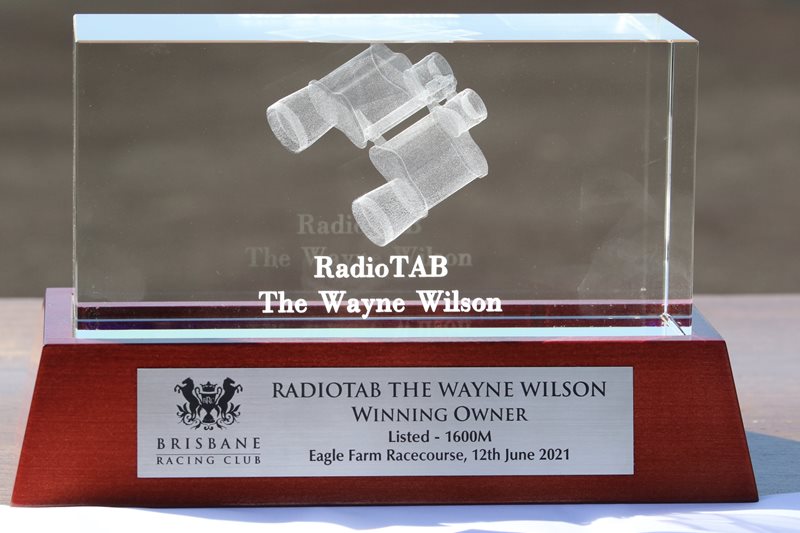
Closing out the century
In 1873, the QTC ran its first Moreton Handicap. This was an important Brisbane Cup lead up until 1979. The present day Moreton Cup, with previous labels that included the Windsor Flying, Cups supported by Katie’s, Ansett, Qantas and simply the QTC, has been offered since 2017.
In 1888, the first Ascot Handicap was taken out by a horse called Ascot while Lady Godiva, a mare by Consternation, saluted as the omen tip in the initial Exhibition Handicap.
The Stradbroke Handicap, first run in 1890, is linked to Governor Ralph Darling’s 1827 voyage from Sydney aboard HMS Rainbow. He named Stradbroke Island and Dunwich in honour of the commander of the ship, Henry John Rous. His family held the titles Earl of Stradbroke and Viscount Dunwich and he had an outstanding career in British racing as the Jockey Club handicapper and author of the weight-for-age scale.
Flemington’s Stradbroke Handicap for juveniles is a reminder of George Rous, third Earl of Stradbroke and the Governor of Victoria in 1920-26.
There was a Shorts Handicap at Oxley in 1890. A quick scan of the archives reveals that these races were not uncommon with more spotted at Newcastle in 1921, Toowoomba (1925) and Warwick (1933).
The Shorts at Randwick traces back to 1867. In 2003, it was fittingly sponsored by King Gee, a clothing company so called in 1926 when King George V was on the throne.
It goes without saying that English place names such as Newmarket, Doncaster, Ascot, Goodwood, Cheltenham and Epsom all became part of the scene Down Under. The custom extended to the likes of the Tattenham Handicap on Derby Day at Eagle Farm in 1891.
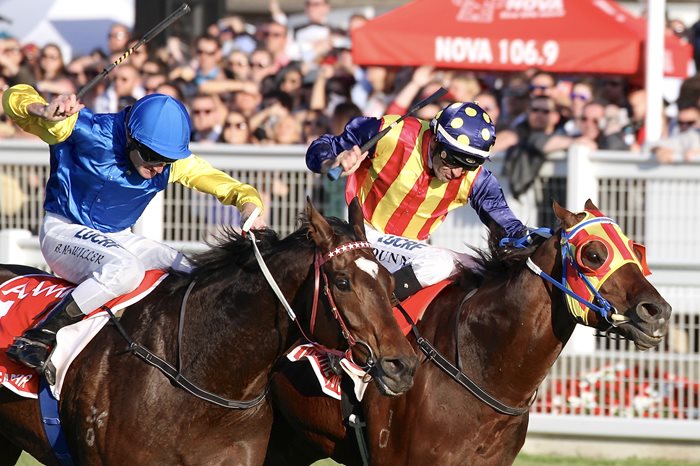
The time honoured set
Meanwhile, institutions in the form of Britain’s classics had made their marks. The five events for three-year-olds were imitated internationally.
The first one of about 14 furlongs was unnamed for its birth at Doncaster in 1776. The title St Leger Stakes was decided at a gathering that planned the next edition. The Marquis of Rockingham, the host who owned the successful horse, turned down the idea that it should become the Rockingham Stakes. Instead, he proposed it be named for the army officer and Member for Grimsby, Anthony St Leger.
The Oaks that premiered in 1779 was named after the Epsom hunting lodge owned by young Edward Smith Stanley, the 12th Earl of Derby. His filly Bridget was the first inscription on the honour roll. During a celebratory dinner put on at that residence by the Earl, a new mile race for the male sophomores was devised. The story goes that he and Sir Charles Bunbury tossed for the name. Bunbury lost out but won the first edition with Diomed. The Earl’s Sir Peter Teazle prevailed in the 1787 version over 12 furlongs.
Bunbury, whose position as a Jockey Club steward may have precluded his moniker being associated with a particular race, was later saluted with a Cup event at Newmarket where he had introduced the Two Thousand Guineas in 1809 and the One Thousand Guineas five years later.
The second half of the 19th century witnessed the Australian debuts of the Caulfield Guineas, One Thousand Guineas, Derbies, St Legers and Oaks. However, Queensland’s staying classic for the fillies did not make an appearance until 1951.
For the 1850 North of England Produce Stakes, the nominated mare had to be covered in 1846 for her progeny to be eligible to start.
This type of notion spread to Australia. The now defunct Mares Produce events were common in bygone days. Through much of the existence of the variation, the Sires Produce Stakes, aspirants’ sires had to be nominated well in advance.
The first Golden Slipper in 1957 was similarly structured. Candidates were the foals of the 1500 broodmares that were nominated by Easter 1954. Around 300 yearlings from that pool of matrons came down to the final 11 runners.
Caulfield’s first Futurity Stakes in 1898 had a complicated set up. Two-year-olds at start time had to be entered as foals and three-year-olds as yearlings in the sprint that was open to all ages.
Tributes for people
The recognition of leadership roles in racing or government has been a recurring theme in race titles. Over time, the confines have broadened and wider categories have come into the arena.
The practice meant that the first Brisbane Cup was not executed in Queensland. During his term as Governor of New South Wales, Thomas Brisbane, as patron of the brand new Sydney Turf Club, donated Brisbane Cups to the organisation in the 1820s. This was some four decades before the QTC created its northern version.
In 1930, Phar Lap annexed the VRC Governor’s Plate, a race that began life in 1888 as a Plate named for the Victorian Governor Henry Loch. Charles Hotham and the first Marquis of Linlithgow, Lewis Hope, were that state’s later vice-regal representatives to be similarly acknowledged. So too were their New South Wales counterparts Lord Chelmsford and Harry Rawson.
The service provided by race club chairmen and secretaries has been widely recognised with race names. Melbourne officials commemorated include Fred Standish, Robert Bagot, Henry Byron Moore, Charles Brown (C.B.) Fisher, Richard Turnbull, Chester Manifold, Lauchlan Kenneth Scobie Mackinnon, Peter Lawrence, Rupert Steele, Andrew Ramsden, Herbert Power, Henry Underwood, Norman Robinson, William Samuel Cox, Alister Clark, John Feehan, Bill Stutt, Alan John Moir, John James Liston and Charles Orr.
Septimus Miller has been recalled differently with his property Cantala attached to Flemington’s top mile. For a while it was the “magic mile of motors” with the financial support coming from Ampol, Nissan, Chrysler and Honda.
The Memsie Stakes goes back to 1899. The Loddon River estate of Caulfield committee member John Cato was the title’s source.
The line of Sydney administrators similarly accorded include Theo Marks, George Main, Colin Stephen, Adrian Knox, Brian Crowley, William C. Hill, George Ryder and Harry Tancred.
The Chipping Norton Stakes relates to the property near Warwick Farm that owner W. A. Long (A.J.C. Chairman, 1900-01) named after a market town south of Warwick in England.
Eagle Farm’s group included Byrne Hart, Patrick O’Shea, Peter Gallagher, Douglas Wadley, Edward Williams and Phil Sullivan. Their names seemed to have been purged from races after 2009.
The 2021 P.J. O’Shea Stakes was called Q22. It is like the Indy 500 car race of 500 miles because 22 refers to the 2200m trip.
The Doomben squad embraced Terry Ahern, Dan O’Mara, Jack Delaney, Clive Uhr and Eddie Broad, the wartime Lancaster bomber pilot whose name aptly prefixed a Flying Handicap.
In 2015, the Listed Oxlade Stakes was instituted to acknowledge Allen Oxlade. With E. J. “Barney” Joyce and George Dash, he headed a consortium that acquired Albion Park from the John Wren-Ben Nathan partnership in 1922.
Oxlade, who captained Queensland and Australian Rugby Union teams in 1907 against New Zealand, was the Brisbane Amateur Turf Club’s inaugural Chairman in 1923.
The Gold Coast’s Alan Hollindale, Toowoomba’s James Taylor and the Perth pair Jack Winterbottom and Ernest Lee Steere are some of the many other club notables remembered by race labels.
Although there are 17 jockey members in Queensland’s Hall of Fame, only George Moore, Mick Dittman, Darby McCarthy and Ken Russell have been decisively acclaimed. Among the trainers, J.J. Atkins, T.J. Smith, Fred Best and Bruce McLachlan have been foremost.
Jockey Pam O’Neill, trainer Gai Waterhouse and journalist-historian-breeding buff Helen Coughlan constitute the vanguard of Queensland females appreciated at black-type level.
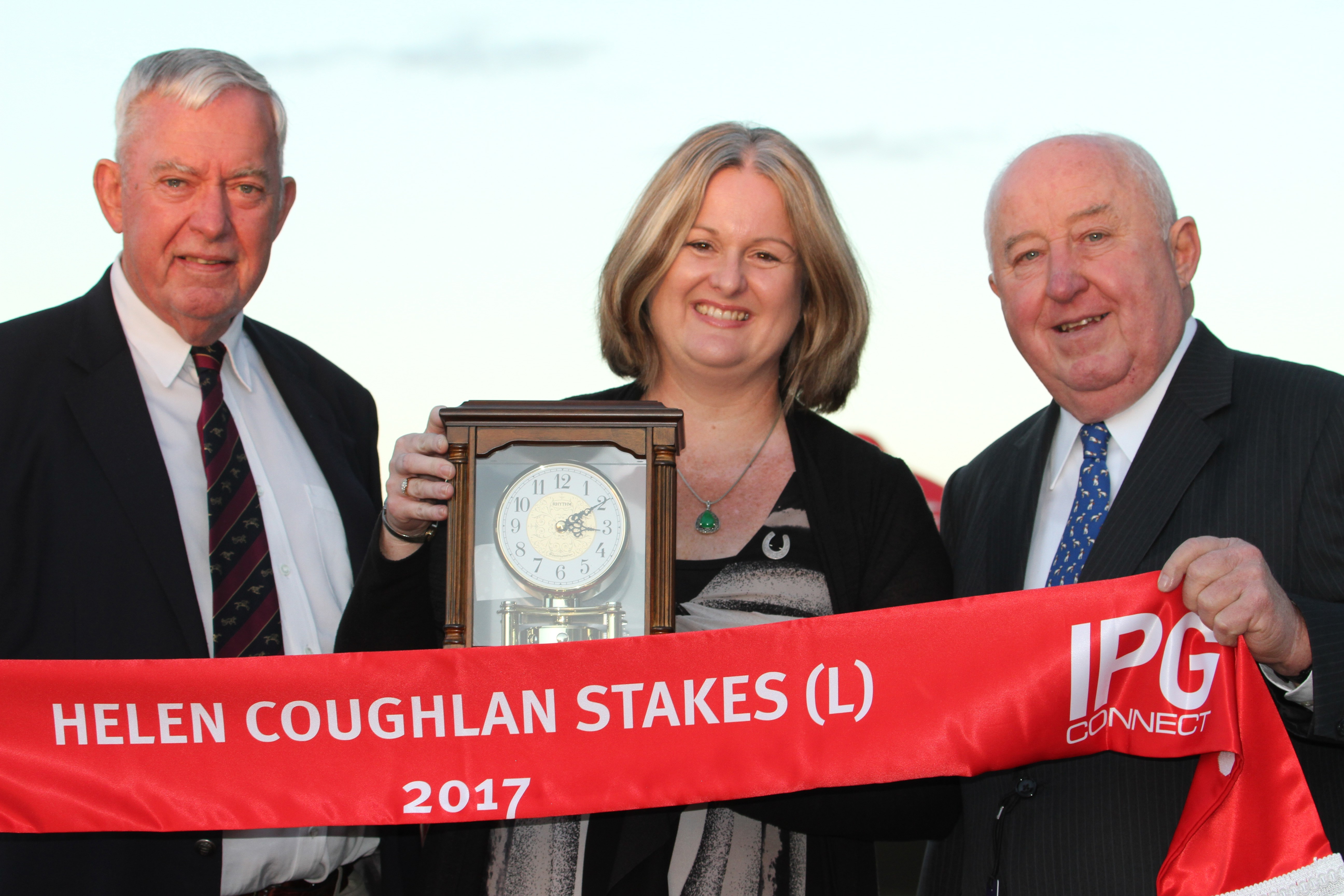
The famous Englishman Richard Tattersall has spawned a range of names that extend to the Duke of Cumberland, Highflyer and the George Adams Mile,
The 1924 introduction of the two-year-old fillies season opener in the name of Lyndhurst’s stud master C.E. (Charles) McDougall Stakes meant that all future Hopeful Stakes, the 1888 innovation for both genders, catered for males only. It was the J. F. (Don) Meynink Stakes from 1971 to 2008.
In 2009, the QTC stalwart’s name was replaced by Phelan Ready (2009 Golden Slipper) and the McDougall Stakes was rebadged as the Calaway Gal Stakes for the filly the ended Queensland’s Slipper hoodoo in 2002.
Racecallers Keith Noud, Wayne Wilson and Pat O’Shea have also been honoured as have two aviators. Bundaberg’s Bert Hinkler landed on the Eagle Farm course proper in February 1928 after his historic solo flight from England. Early renewals of his race were guides to the Stradbroke.
Charles Kingsford Smith was born at Hamilton’s Riverview Terrace, just a hand canter away from the old Eagle Farm aerodrome where the Southern Cross touched down in June 1928.
Smith, Charles Ulm and two Americans had crossed from America to Australia in three stages. Today’s Kingsford Smith Cup kicked off as the Delaney Quality in 1964.
Many, many other localities have naturally respected their own.
Townsville has a Love Memorial for James Simpson Love, the club’s secretary for 38 years, beginning in 1887.
Similarly, Mackay Turf Club’s H. L. (Henry Lindesay) Black Memorial is held for the secretary from 1882 to 1919 who was also the North Queensland Racing Association’s advisory steward, jockey and Mayor in 1888.
In many instances in the country, families sponsor events named after their loved ones.
The military also got a look in with Victoria’s inclusion of stakes events for wartime icons Thomas Blamey and John Monash.
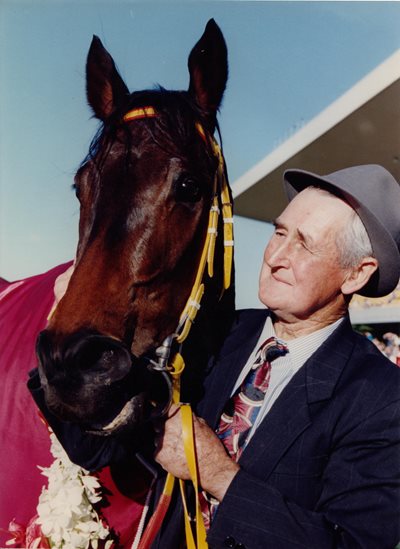 About horses
About horses
Somewhat surprisingly, thoroughbreds did not figure extensively in race names before the 1970s.
The supreme mare Wakeful, valiant in her swan song second with 63.5kg to Lord Cardigan (41.5kg) in the 1903 Melbourne, has deservedly been attached to a VRC Oaks lead up since 1932.
On the other hand, it seems inconceivable that Phar Lap is missing from Flemington’s racebooks. The names other stars such as Flight, Manikato, Maybe Diva, Winx and Kingston Town (in Perth) are affiliated with Group 1 contests.
Phar Lap and Tulloch have guernseys in Group 2 grade in Sydney. The Peter Pan Stakes (1978-2002) is now the Golden Rose and so the wonderful Pantheon colt, that won a Melbourne Cup at three and another at five with 61.5kg in the mud, is to be forgotten.
In fact, Mackinnon may have preferred his name was related to the Gibson Carmichael Stakes. That race, named after a Governor, was his colt Carradale’s best Flemington win. Phar Lap downed him in the Derby and a Melbourne (now Mackinnon) Stakes and he veered right off the track when fancied in the 1929 Melbourne Cup. In short, springtime was not joyous for the chairman with an ambition to bring Phar Lap back to the field.
The public took issue with VRC’s strategies in tinkering with the weight for age scale with penalties and allowance. Fans of that period would most likely prefer that the Melbourne Stakes became the Phar Lap Stakes. It was also the Red Terror’s last victory in Australia.
Eclipse, the unbowed English legend in 1769-70, somewhat ironically replaced the word Consolation in 1938 after three renewals of a contest aimed at compensating luckless Melbourne Spring Carnival contenders.
Another oddity is Randwick’s Gimcrack Stakes for juvenile fillies. The event, named after a marvellous English colt, was originally a unisex race.
Ben Bolt (1886 Caulfield Cup, Carrington Stakes, 1888 Doncaster) was a widely travelled Queensland-bred performer raced by William Strickland, a Bowen Alderman and owner of the local Commercial Hotel. A Cup and the Bowen racecourse is named for this idol.
Brisbane black-type competitions celebrate the likes of Bernborough, Lough Neagh, Rough Habit, Dane Ripper, Phelan Ready, Calaway Gal, Gunsynd, Tails, Mode, Bright Shadow, Vo Rogue, Spear Chief, Buffering, Daybreak Lover, Dalrello, Grey Affair, Falvelon and Chief De Beers (pictured above).
Perc and Ted Kruger, the breeders and owners of the stellar 1960s filly Eye Liner, were committee members of the Ipswich Amateur Turf Club. In 1974 their brilliant two-year-old replaced the club’s long serving leader John Canty in the title of a key Bundamba sprint.
Of the 18 Hall of Fame inductees, all bar Fitz Grafton, High Syce, Carioca and Smokey Eyes have been remembered. A leg of the Princess Series is a tribute to Tea Rose (1944 AJC Derby), the Brisbane filly who starred in Sydney in wartime.
Places, events and sponsors
Townsville’s Cleveland Bay, Dalby’s Plough Inn, Toowoomba’s Weetwood House, Brisbane’s Toorak House, Labour Day, Brisbane’s Exhibition, Queensland Day, Australia Day and Gympie’s Muster music festival are a small sample of the scope of race names.
Personal and amateur sponsorships have been around since the outset.
Publicans and bookmakers were main sponsors of the opening purse for the Great Metropolitan Handicap at Epsom in 1846. The original rendition followed a unique course over 18 furlongs. The first phase was up the straight for three furlongs from the winning post followed by a right turn across the infield before rejoining the course proper of the horseshoe shaped track about five from home. The journey was then in the orthodox direction around Tattenham Corner.
The Australian Jockey Club’s (Great) Metropolitan Handicap was first decided in 1866 and the namesake at Eagle Farm began as a Show Week feature.
Eventually profound commercial backing stepped in. For example, the Doomben 10,000 was known as the Rothmans 100,000 from 1980 to 1989.
However, the Tobacco Advertising Prohibition Act 1992 banned almost all tobacco advertising and sponsorship from December 1995 onwards. It altered the landscape with promotions of Marlboro and Winfield disappearing. Financial support from brewers and wine makers continues.
There have been times when sponsors’ names have been the full title. Examples include the Emirates Stakes (Cantala), Lexus Quality (Hotham), Elders Handicap (Stradbroke) and XXXX Cup (Doomben Cup).
Meanwhile, punters assessing British form for the Melbourne Cup come across two staying tests with linguistic backgrounds.
The Ebor Handicap (2m) is derived from the shortened form of Eboracum, the Roman name for York. The event, launched in 1843, became the first British handicap race to be worth £1,000,000 in 2019. Despite the large prize, the national policy is that only set weight contests can be awarded Group 1 status.
Cesarewitch is the English interpretation of Tsesarevich, the Imperial era word for the heir to the Russian throne. The Newmarket marathon, that starts in Cambridgeshire and finishes in Suffolk, was named for Tsesarevich Alexander, the future Tsar Alexander II, who apparently donated £300 to The Jockey Club. He witnessed the first running in 1839 when he was guest of a very young Queen Victoria.
Language-wise, the Aboriginal words Booroolong and Koomeela were once in the spotlight at Doomben.
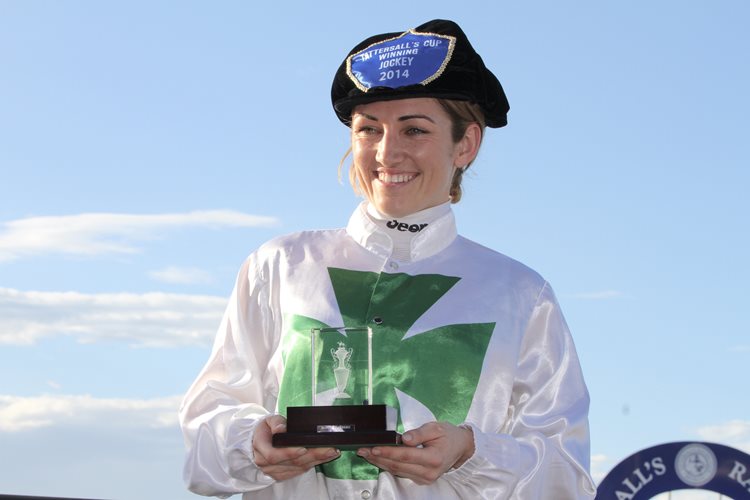
Maribyrnong, in the local Indigenous dialect is Mirring-gnay-bir-nong. It has possible translations of “I can hear a ringtail possum” or “saltwater river”, which was the early name of the stream adjacent to Flemington.
The VRC Maribyrnong Plate first appeared in 1871. Some other surviving principal plates are the Breeders Plate, Oakleigh Plate, Cox Plate and the Craven Plate, the 1867 creation at Randwick that was inspired by Newmarket’s Bill Craven Stakes.
Although tradition is an integral part of the fabric, imaginative new ventures have constantly emerged.
The Golden Nugget, Magic Millions, Silk Stocking for fillies and mares and the Bat Out of Hell, the frank and forthright title for a 900m dash, are just a few examples generated at the Gold Coast.
The Group 1 Tattersall’s Tiara is a major improvement on its predecessor, the Winter Stakes.
Using seasons in race names was eminently sensible in the fledgling days when clubs put on less than a handful of meeting per year.
New South Wales has turned out a rush of novel contests of late. The Everest is a curious hybrid with slot owners putting up a mountain high pile of sweepstakes. The authorities add a massive amount and non-slot owners get a crack if they are approached to negotiate a deal.
The American forerunner, Pegasus World, was brilliantly suitable with its connection to a large northern constellation that is said to represent a winged horse. It certainly was an out of this world concept and a bright attraction.
Another highly consequential change was the shifting of the Queensland Derby from the summer to the winter in 1973. Sydney followed suit with a switch from spring to autumn in 1979. The manoeuvres reshaped the calendars, making opportunities for new events as well as seeing the demise of others.
The 1922 Ladies Bracelet at Burrandowan in Queensland’s South Burnett demonstrated how a race name can assume an immense importance.
Because entries had to be made by a female, John Duff had to find a willing associate sight unseen. Dorothea Evans agreed to assist and the noble steed Thunderclap duly earnt the laurels.
There is no prize for guessing who received the trophy bracelet. Four years later, John and Dorothea were married. Although Bracelet races are long gone, their granddaughter, Kathy Duff, fashions a bracelet jewellery that she presents annually to the jockey who wins the Burrandowan Cup.
It is fair to say that there are fascinating snippets behind the names of most races.